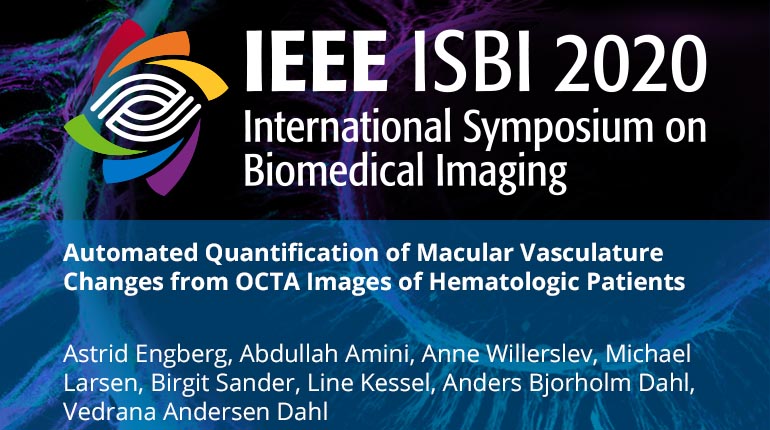
Already purchased this program?
Login to View
This video program is a part of the Premium package:
Automated Quantification of Macular Vasculature Changes from OCTA Images of Hematologic Patients
- IEEE MemberUS $11.00
- Society MemberUS $0.00
- IEEE Student MemberUS $11.00
- Non-IEEE MemberUS $15.00
Automated Quantification of Macular Vasculature Changes from OCTA Images of Hematologic Patients
Abnormal blood compositions can lead to abnormal blood flow which can influence the macular vasculature. Optical coherence tomography angiography (OCTA) makes it possible to study the macular vasculature and potential vascular abnormalities induced by hematological disorders. Here, we investigate vascular changes in control subjects and in hematologic patients before and after treatment. Since these changes are small, they are difficult to notice in the OCTA images. To quantify vascular changes, we propose a method for combined capillary registration, dictionary-based segmentation and local density estimation. Using this method, we investigate three patients and five controls, and our results show that we can detect small changes in the vasculature in patients with large changes in blood composition.
Abnormal blood compositions can lead to abnormal blood flow which can influence the macular vasculature. Optical coherence tomography angiography (OCTA) makes it possible to study the macular vasculature and potential vascular abnormalities induced by hematological disorders. Here, we investigate vascular changes in control subjects and in hematologic patients before and after treatment. Since these changes are small, they are difficult to notice in the OCTA images. To quantify vascular changes, we propose a method for combined capillary registration, dictionary-based segmentation and local density estimation. Using this method, we investigate three patients and five controls, and our results show that we can detect small changes in the vasculature in patients with large changes in blood composition.
 Cart
Cart Create Account
Create Account Sign In
Sign In





